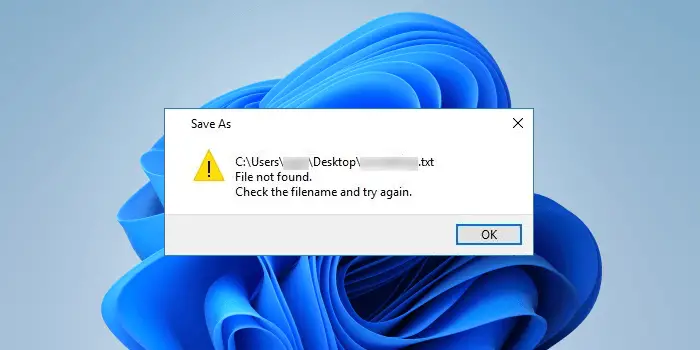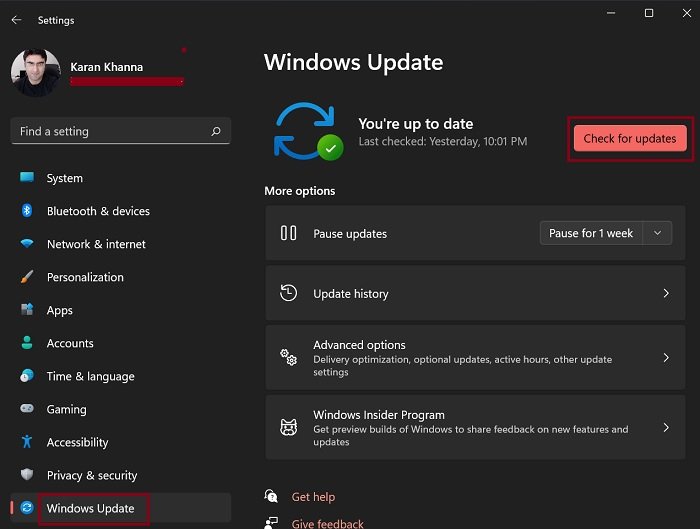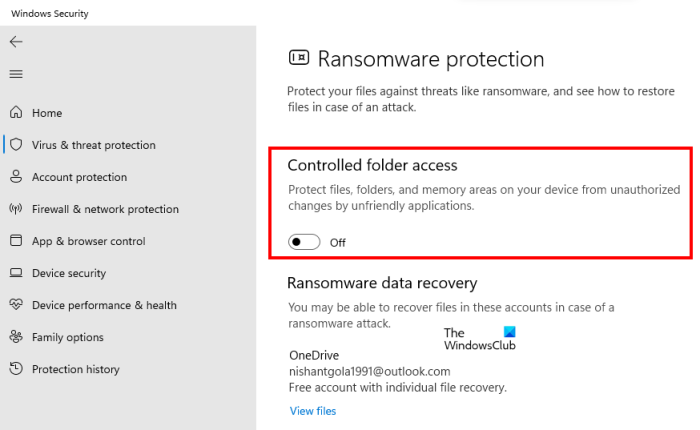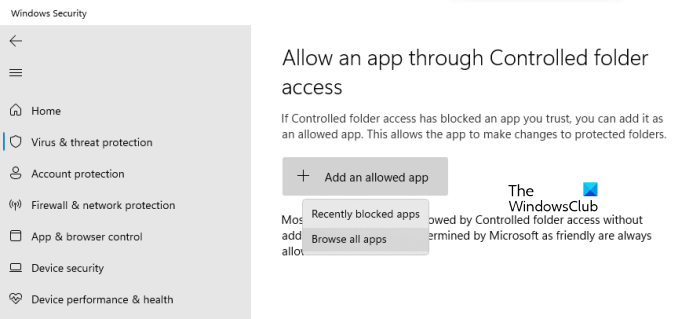Some Windows 11/10 users are not able to save files on their Desktops. According to them, when they try to save a file on their Desktops, they receive an error message. The error does not occur when they save the same file to another location on the hard disk. In this article, we will see what you should do if you cannot save files on your Windows Desktop.

The complete error message is:
C:\Users\1234\Desktop\YYYY.docx
File not found.
Check the filename and try again.
In the above error message, 1234 is the username on a Windows 11/10 computer and YYYY is the document name. This error message is not associated with a particular document type. You may encounter this error while saving any document to your Desktop.
Why are my Desktop files not saving?
There could be many reasons why your Desktop files are not saving. A third-party process or your antivirus might be blocking the app to save the files to your Desktop or the “Access to Controlled Folders” option in Windows Security might be enabled on your system. Sometimes, the issues occur due to a bug. In such cases, and installing the latest Windows Update helps.
Cannot save files on Desktop in Windows 11/10
If you cannot save files on your Windows 11/10 Desktop, use the following fixes to resolve the issue.
- Check for Windows Update
- Disable your antivirus
- Turn off the Access to Controlled Folders option in Windows Security
- Allow the blocked app through the Controlled folder access
- Create a shortcut to a folder on the Desktop
- Troubleshoot in Clean Boot State.
Let’s see all these fixes in detail.
1] Check for Windows Update

The first thing that you should do is check for Windows Update. Sometimes, issues occur due to a bug. Installing Windows Updates fixes bugs in most cases. Hence, we suggest you update your Windows 11/10 computer and see if it helps.
2] Disable your antivirus
It is also possible that your antivirus is blocking you from saving the file on your Desktop. This is one of the major causes of these types of issues. Hence, we suggest you disable your antivirus temporarily and then save the file again. If you are able to save the file successfully on your Desktop after disabling the antivirus, your antivirus is the culprit. If you have purchased a third-party antivirus, contact their support to resolve the issue. If you have Windows Defender, what you have to do is explained in the next solution.
3] Turn off the Controlled folder access option in Windows Security
A lot of users were facing this issue because the Controlled folder access option was enabled on their systems. Disabling this option in Windows Security fixed the issue. You should also try this. The steps for the same are explained below:

- Click on Windows Search and type Windows Security.
- Select Windows Security from the search results.
- Click Virus & threat protection.
- Scroll down and click the Manage Ransomware protection link under the Ransomware protection section.
- Turn off the Controlled folder access button.
- Click Yes in the UAC prompt.
Disabling this option worked for many users Hence, it may also work for you. But this action may put your system to risk of a Ransomware attack. Therefore, if you do not want to disable this feature of Windows Security, you can try an alternate method. This is explained in the next solution.
Read: You don’t have permission to save in this location error message.
4] Allow the blocked app through the Controlled folder access
If you do not want to disable the Controlled folder access option in Windows Security, you can allow the problematic app through the Controlled folder access. The steps for the same are provided below:

- Open the Ransomware protection page in Windows Security by following the steps mentioned in the previous fix.
- Turn on the Controlled folder access option.
- Now, click on the Allow an app through Controlled folder access link.
- Click Yes in the UAC prompt.
- Click on the Add an allowed app button and then select the Browse all apps option.
- Now, select the app you are experiencing the issue with.
This should work.
5] Create a shortcut to a folder on the Desktop
If none of the above solutions helped you, you can do one thing. Create a new folder on another hard drive partition. Use this folder to save only those files that you want to save on your Desktop. Now, create a shortcut to this folder on your Desktop. To do so, right-click on that folder and select “Send to > Desktop (create shortcut).” In Windows 11, first, click Show more options to view these options in the right-click context menu.
6] Troubleshoot in Clean Boot State
It is quite possible that some third-party applications may be interfering. We suggest you perform Clean Boot and then manually identify the offender and then disable or remove it.
How do I save files to my Desktop in Windows 11?
You can easily save your files to your Desktop by using the Save or Save As option. While saving the file, select Desktop as your save location. Alternatively, you can save the file to any location and then move that file to your Desktop by using the Cut and Paste option.
Leave a Reply